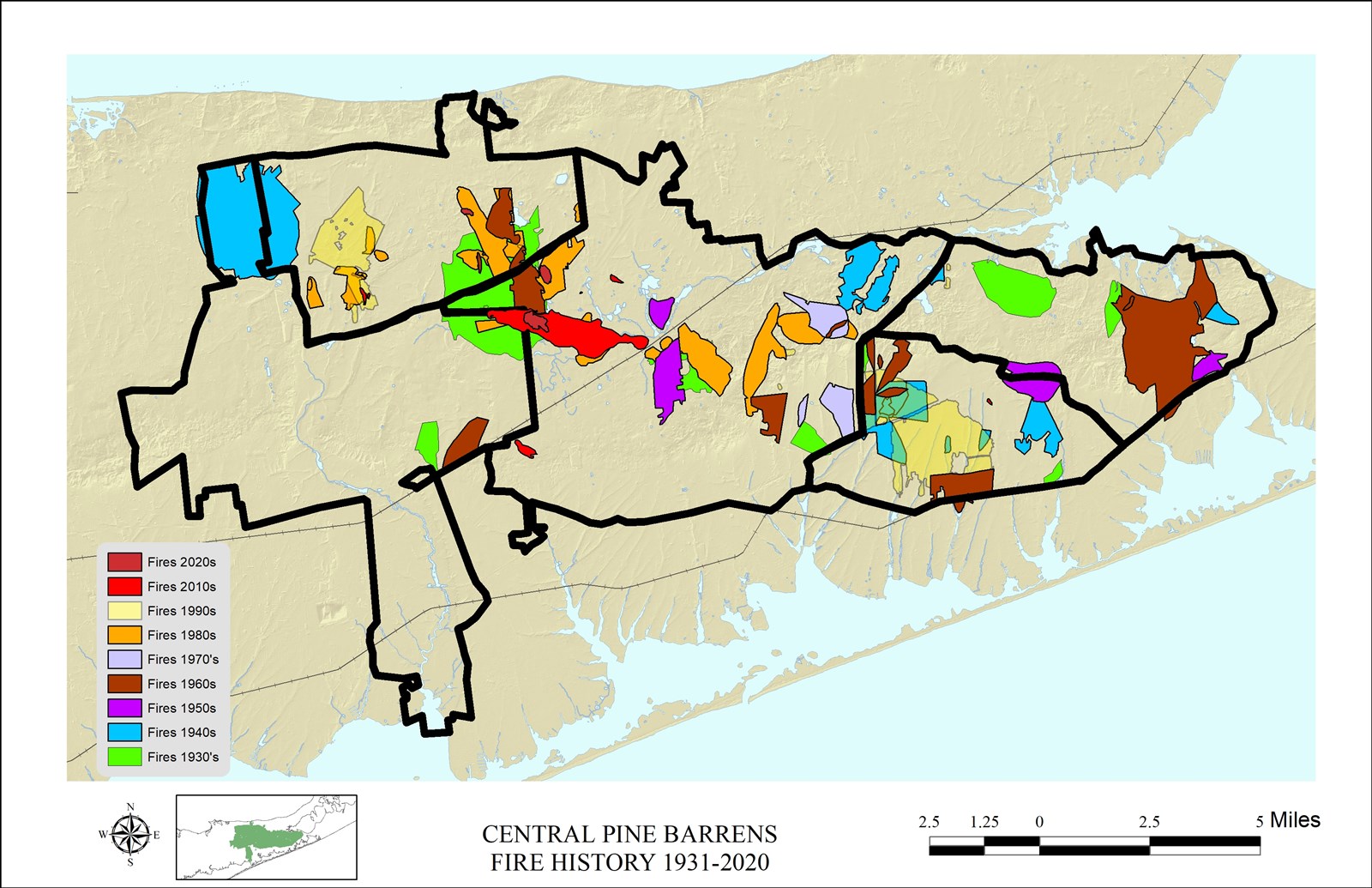Fire, both pre- and post-European settlement, is one of the most formative disturbance regimes in the Central Pine Barrens and includes both naturally-ignited and human-ignited large fires that were known to burn across the Long Island landscape. Native Americans extensively employed fire for a variety of land and habitat management goals. This historic cyclical wildfire and human-driven fire regimen is what created and has sustained the Central Pine Barrens and the diversity of species that have inhabited it through time. Ironically, this critical and formative disturbance regime has been contemporarily lost from the landscape due to modern urbanization and development. A culture of fire suppression was initiated in the 19th century within the region following massive wildfire outbreaks. The legacy of fire suppression continues to occur in the region due to the mass development of Wildland-Urban Interface (WUI) areas within the Central Pine Barrens. Fire suppression continues to be vital to protect human life and property, however it is recognized that suppression also removes the critical element of fire disturbance that assists in the maintenance of healthy forests and ecosystems and in the absence of natural fire, carefully human managed prescribed fire must be implemented in its place.

A detailed review of fire history and maps are provided in the Central Pine Barrens Comprehensive Fire Management Plan, which can be found (create link to section here). To learn more about contemporary and historic wildfire in the Central Pine Barrens, visit the Wildfire Management page.
To learn more about the prescribed fire management program follow our Prescribed Fire Facebook page, email prescribedfire@pb.state.ny.us or call (631) 288-1079.